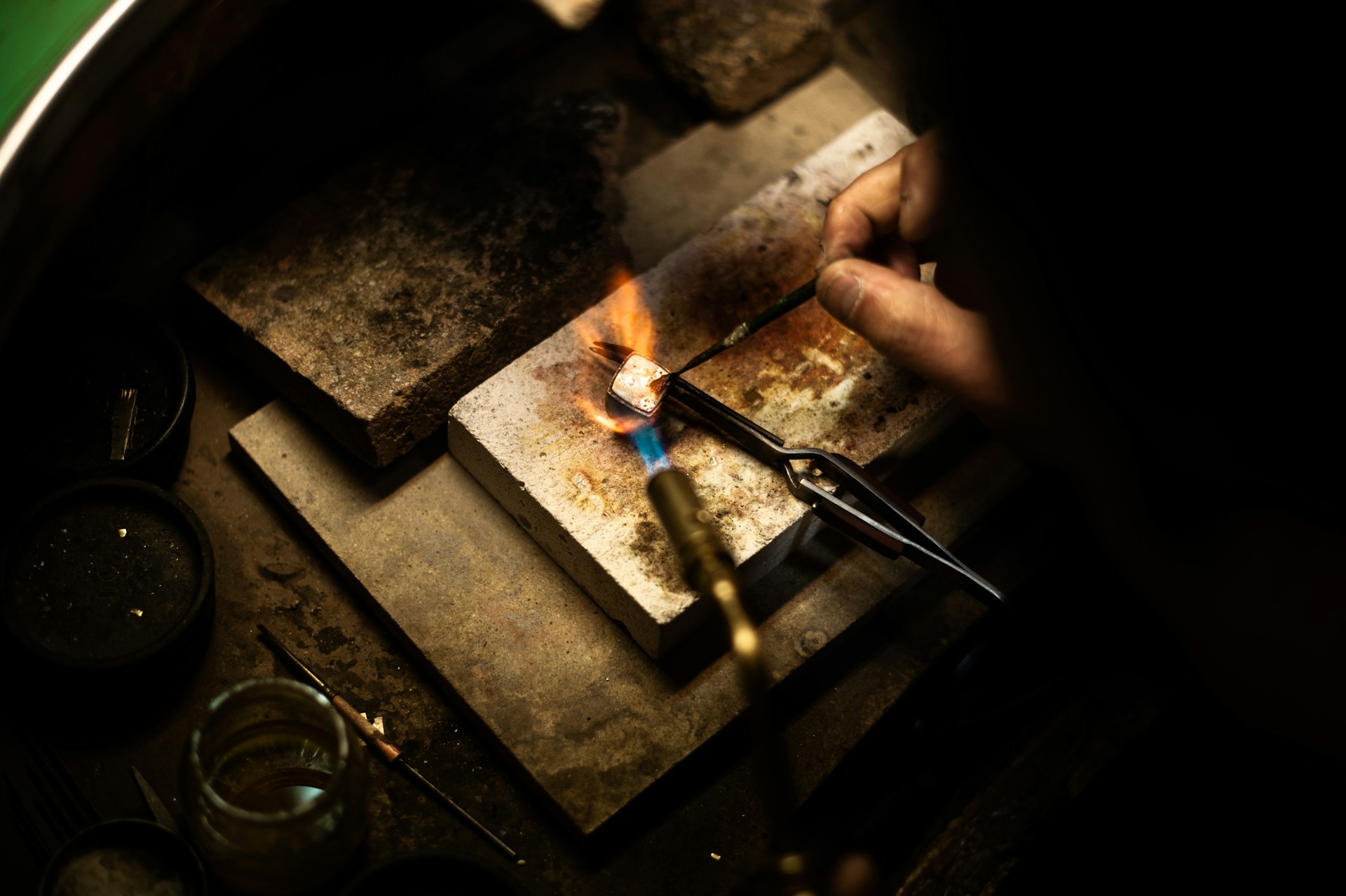Jewelry making is a craft that requires specialized tools, each with a specific role to ensure precision and quality throughout the work. Whether it’s cutting, shaping, soldering, or polishing, tools are crucial at every stage of jewelry creation. Here’s an overview of the main tools used by jewelers, from the initial design phase to the finishing touches.
Cutting and Shaping Tools
In jewelry creation, the first step often involves cutting and shaping materials. Pliers and jeweler’s saws are foundational tools for this task.
- Pliers: Available in various shapes (flat, round, cutting), pliers are used to hold, bend, and manipulate metal with precision. They’re often used to create earrings, rings, or set stones.
- Jeweler’s saw: Equipped with ultra-fine blades, it’s ideal for cutting intricate shapes into precious metals like silver and gold. The jeweler needs a steady hand and excellent hand-eye coordination to follow delicate patterns without damaging the material.
- Files and rasps: These tools smooth edges, shape contours, and add finesse to details.
- Engraving machine: Preferred by experienced creators, it allows for highly precise carving or engraving of complex designs, especially in rings and pendants.

Soldering and Assembly Tools
Assembling different parts of the jewelry is a critical step that requires specific soldering tools.
- Blowtorch: Essential for soldering metal parts, it heats metals to a temperature that allows them to fuse. This step requires skill to avoid overheating, which could alter the color or structure of the metal.
- Soldering wires: Specific wires in silver or gold ensure solid, seamless cohesion between parts.
- Holding clamps (or “third hands”): These hold pieces in place during soldering, providing stability and precision.
- Setting tools: Prongs and chisels help create small cavities to secure gemstones, ensuring durability and aesthetic alignment.
Finishing and Polishing Tools
Finishing touches give the jewelry its final shine, transforming a basic assembly into an elegant, gleaming piece.
- Polishers and polishing brushes: Used to smooth the jewelry’s surface and remove imperfections. Motorized polishers are ideal for uniform and quick polishing, while manual brushes are used for small details.
- Abrasive paper: Used for a matte or satin finish, depending on the desired style.
- Burnisher: Made of steel or agate, it enhances the shine on specific areas, adding a luminous mirror-like effect to the piece.
- Cleaning stones and polishing cloths: These remove the last traces of dust or oxidation, highlighting the jewelry’s reliefs and finishes.
Measuring and Quality Control Tools
Another essential aspect of jewelry making lies in the precision of measurements and the quality control of the materials used. Measuring tools are indispensable for ensuring that each piece meets the design specifications. Among these tools, calipers and rulers are commonly used to measure the exact dimensions of metals and stones.
Calipers allow for both internal and external measurements with great accuracy, which is crucial for pieces that require a perfect fit, such as rings.
At the same time, quality control tools like microscopes and magnifying glasses help jewelers inspect the details of their creations. These instruments enable them to check the quality of the finish, detect any imperfections, and ensure that stones are properly set.
Good quality control is fundamental to ensuring customer satisfaction and the durability of the jewelry. By incorporating these measuring and verification tools into their process, artisans ensure that each creation is both aesthetically pleasing and technically impeccable, thereby enhancing their reputation and the value of their pieces.
Jewelry making relies on a diverse range of tools that, through precision and attention to detail, enable artisans to bring unique creations to life. From cutting tools to polishing instruments, each step of the creation process requires suitable equipment and a high level of technical skill.
Thanks to these tools and the expertise of jewelers, each piece becomes a quality creation, both personal and precious.